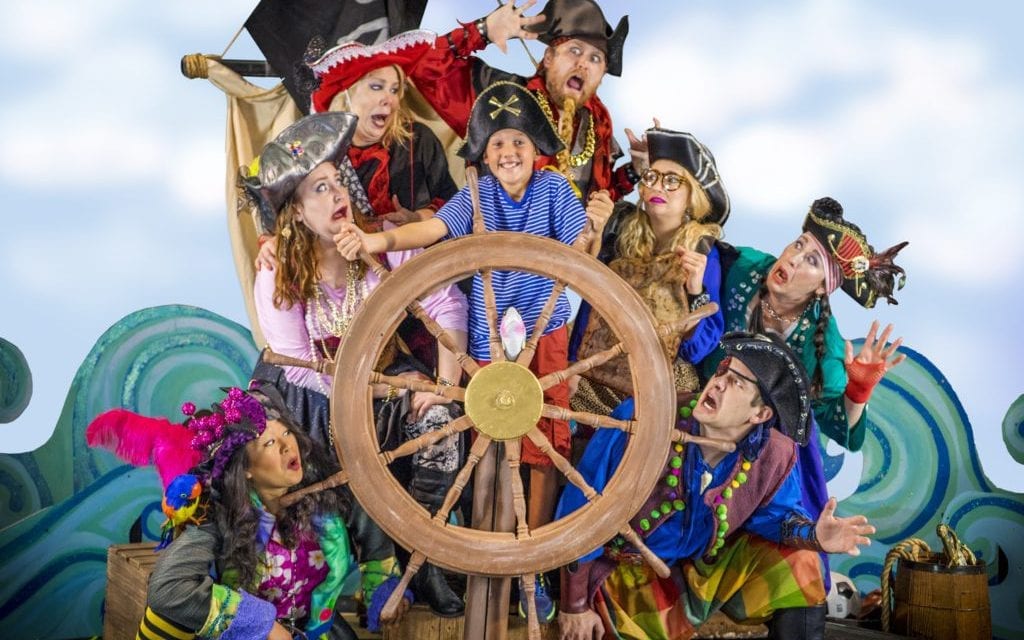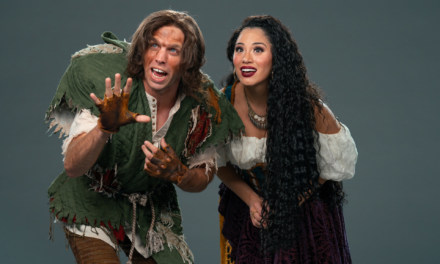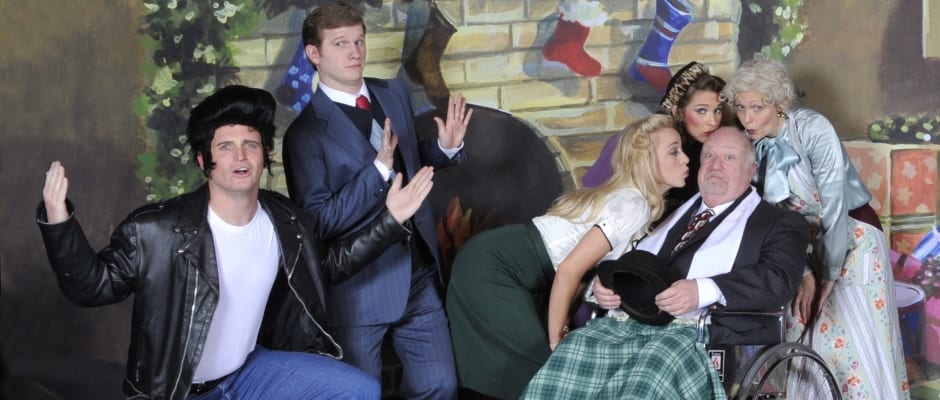OREM — Yo ho, scalawags! The SCERA be producing How I Became a Pirate through November. And it’s a show that landlubbers of all ages can enjoy without spending many doubloons to see.

Show closes November 2, 2018.
With a script, music, and lyrics by Janet Yates Vogt and Mark Friedman and based on the book by Melinda Long, How I Became a Pirate is the tale of young Jeremy Jacob’s experience when a shipload of goofy pirates come ashore while he plays at the beach. For an hour Jeremy and the pirates sing and dance about the pirate life until they return ashore and the child must go to soccer practice. It’s all part of Jeremy’s imagination, but it’s a fun flight of fancy and easily holds a child’s attention.
The real captain of this production is director/choreographer Shawn M. Mortensen, who has a great talent for building an appropriate mood for each scene. The island-inspired “A Good One to Boot” featured rhythmic swaying in the movements, while “Read the Map” was the perfect Gilbert and Sullivan parody. I also loved the storm scene, which added some danger, but was not intense enough to scare the children in the audience.
But what I appreciated most about Shawn M. Mortensen’s direction is how serious he took the material. Some companies in Utah don’t treat their productions for children with the same level of attention and detail that they give to their productions for adults. But this director respects his audience—even if they are children—and worked with his cast and designers to create a show that had the highest technical and artistic standards possible. As a result, How I Became a Pirate doesn’t look cheap or juvenile. It’s just a good production whose target audience happens to be 4-10 years old.

Tyson Kemp as Jeremy Jacob. Photo by Rachel Gibson Photography.
Tyson Kemp starred as Jeremy Jacob, and it was impressive to see a child his age manage being on stage for an entire hour without breaks. His fascination with the pirates made the character relatable for the children in the audience, too. The poor kid, though, needs a belt, and he spent much of the evening hiking up his shorts.
Eric Smith played Braid Beard, the leader of the pirates, with confidence and charisma. Smith has a good grasp of the pirate jargon, and he never let the odd language interfere with the meaning of his lines. Smith also found the perfect balance between playing a dangerous rogue and being a safe character for kids to watch. His strongest scene, though, was when looking for a place to bury the treasure, which could have become tedious as the character has to be oblivious to the other pirates telling him that Jeremy had a map. But Smith played up the moment and succeeded in pulling a few laughs from a joke that shouldn’t have been that funny.
Among the other actors, my favorite was Cookie Fox as Max the Pirate. Fox seemed to have the most fun on stage as she interacted with the stuffed parrot on her shoulder or energetically performed her dance steps. But what worked best for this group of actors is that all the pirates had individual personalities and mannerisms. This was not a traditional musical theatre ensemble where chorus members are carbon copies of one another. Instead, this cast differentiated their characters from one another, which made their scenes and songs look like a group of friends hanging out together, instead of an artificial, stagey spectacle.

Cookie Fox as Max the Pirate. Photo by Rachel Gibson Photography.
An essential ingredient of any production for young audiences is visual elements that can capture a child’s attention. In this aspect, How I Became a Pirate succeeds on all counts. Deborah Bowman and Kelsey Seaver‘s costumes are a Kodachrome version of the traditional Hollywood pirate, with touches of neon and other bright colors on most costume pieces. Chase Elison‘s lighting designs highlighted the costumes and made them pop out against the browns of the sand or ship in Chad Mortensen’s set design. The best aspect of the set, though, was the ship that was made up of three pieces that easily came together and provided various platforms for the actors to perform on and provide variety in the staging. I was also impressed by the sleeping quarters that were built into the rear of one set piece, a little surprise that added to illusion of reality of the ship. (I strongly suggest that the SCERA keep the ship set pieces for their upcoming production of The Little Mermaid in the spring.)
When I reviewed How I Became a Pirate at the SCERA in 2011, I commented that the the play “. . . would bore anyone older than 10.” The current production, though, has changed my mind. Perhaps it is because I am no longer single and can appreciate a child’s perspective more. Or maybe I am so tired of PAW Patrol, PJ Masks, and Muppet Babies that material written for a slightly older audience seems like a godsend. Either way, I found How I Became a Pirate to be an enjoyable show, and I appreciate the cast and crew at the SCERA for producing this gem for young audiences again. Every old salt should take a child to this show or walk the plank.





